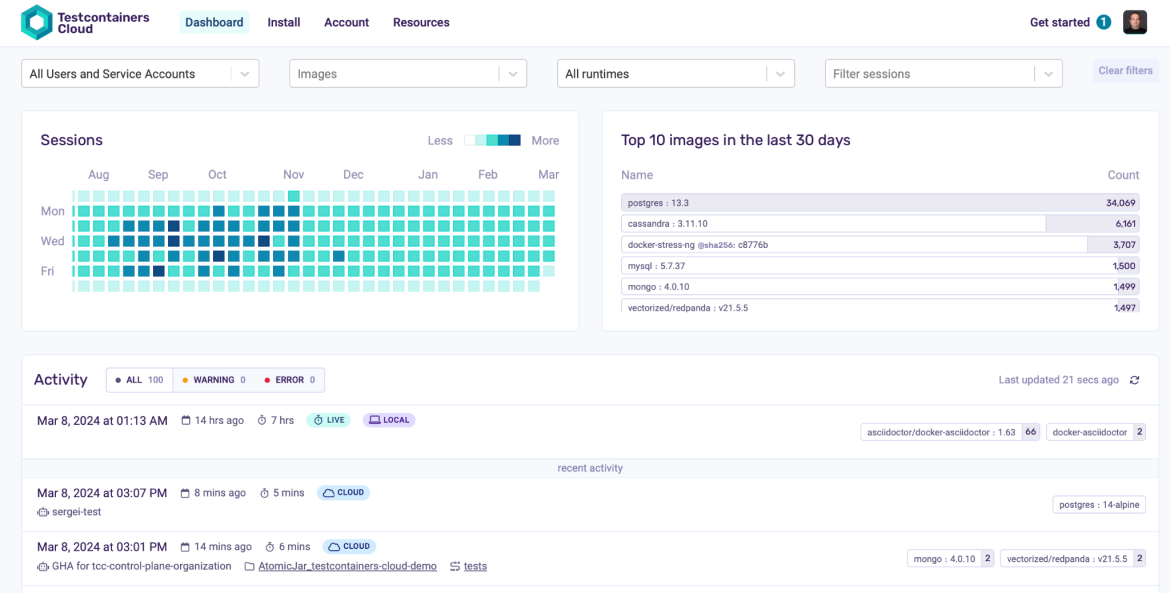Reducing developers' cognitive load is key to increasing their productivity. Even still, 76% of organizations say cognitive load on developers is so high that it is a source of low productivity. In response, organizations are establishing platform engineering teams to improve the developer experience while ensuring governance, security and control, with Gartner anticipating 80% of companies forming these groups by 2026.
Developers' quest for shorter-feedback cycles drives the adoption of solutions that allow them to get a fast feedback cycle, in the inner loop of development, often even before they commit. As early as 2019 Red Hat partnered with the Testcontainers team and adopted the pattern in Quarkus, releasing Quarkus Dev-Services, a first of its kind local-development and testing cloud native experience in Java.
Yet local, developer-hosted solutions rely on developers installing and managing their Docker environment with Podman Desktop, Docker Desktop, or alternatives and often fall outside the control of governance of an individual or platform team.
Red Hat and the Testcontainers team at Docker have partnered to provide the full power of Testcontainers in OpenShift while still taking full advantage of corporate governance, security and compliance, and the overall flexibility of the platform.
OpenShift customers can now deploy the Testcontainers Cloud back-end to OpenShift. As a result of this collaboration - developers will be able to iterate locally and benefit from the workload running in a secure way on OpenShift clusters.
Testcontainers Cloud
Testcontainers Cloud allows the at-scale adoption and productization of Testcontainers by platform teams as it acts as a managed service providing a cloud back-end for Testcontainers tests that run locally or in Continuous Integration (CI). By allowing organizations to manage Testcontatiners adoption and roll-out, it reduces local resource requirements and provides a consistent scalable back-end for all users of Testcontainers in an organization.Testcontainers Cloud also adds centralized management dashboards and improves debugging of Testcontainers-powered dependencies and other developer-specific functionality.

By deploying Testcontainers Cloud back-end to OpenShift all the benefits of Testcontainers are provided while the data and workload stay within the OpenShift environment.

Interested in learning more about Testcontainers and OpenShift? Reach out or stop by the Docker (J3) and Red Hat (E1) booths at KubeCon EU 2024!
For more hands-on experience and detail:
You can get started with Red Hat OpenShift
You can try out Testcontainers
Find out about Quarkus Dev Services
And sign up for Testcontainers Cloud
About the authors
Sergei is VP of Product & Engineering at Docker, leading the Testcontainers Open Source project co-created by him. He joined it as part of the AtomicJar acquisition where he was a co-founder and CEO. Sergei is an ex-member of the Spring Open Source team at Pivotal/VMware, and earlier an SRE/Staff Engineer at Zalando, N26, TransferWise and another devtools company ZeroTurnaround. He is also a Java Champion and Apache Committer.
Browse by channel
Automation
The latest on IT automation that spans tech, teams, and environments
Artificial intelligence
Explore the platforms and partners building a faster path for AI
Open hybrid cloud
Explore how we build a more flexible future with hybrid cloud
Security
Explore how we reduce risks across environments and technologies
Edge computing
Updates on the solutions that simplify infrastructure at the edge
Infrastructure
Stay up to date on the world’s leading enterprise Linux platform
Applications
The latest on our solutions to the toughest application challenges
Original shows
Entertaining stories from the makers and leaders in enterprise tech
Products
- Red Hat Enterprise Linux
- Red Hat OpenShift
- Red Hat Ansible Automation Platform
- Cloud services
- See all products
Tools
- Training and certification
- My account
- Developer resources
- Customer support
- Red Hat value calculator
- Red Hat Ecosystem Catalog
- Find a partner
Try, buy, & sell
Communicate
About Red Hat
We’re the world’s leading provider of enterprise open source solutions—including Linux, cloud, container, and Kubernetes. We deliver hardened solutions that make it easier for enterprises to work across platforms and environments, from the core datacenter to the network edge.
Select a language
Red Hat legal and privacy links
- About Red Hat
- Jobs
- Events
- Locations
- Contact Red Hat
- Red Hat Blog
- Diversity, equity, and inclusion
- Cool Stuff Store
- Red Hat Summit


